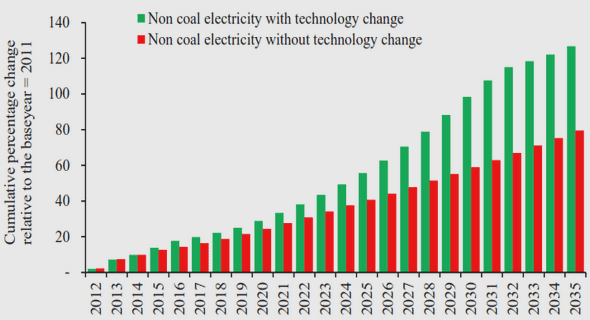(Downloads - 0)
For more info about our services contact : help@bestpfe.com
Table of contents
Introduction
I.1. SCORPION STINGS AS A HEALTH PROBLEM
I.1.1. Scorpion stings around the world
I.1.1.1. America
I.1.1.2. Africa
I.1.1.3. Asia
I.1.2. Scorpion venom
I.1.3. Global market of therapeutics and treatment cost
I.1.3.1. Serotherapy
I.1.3.2. Commercially available antivenoms
I.1.4. Production of antivenoms
I.2. BIBLIOGRAPHY RESEARCH METHODOLOGY
I.2.1. Scientific databases
I.2.2. Keywords
I.2.3. Searching profiles
I.2.4. Coupled searching profiles
I.3. QUANTITATIVE ANALYSIS OF THE WORKING DATABASE
I.4. QUALITATIVE ANALYSIS OF THE WORKING DATABASE
I.5. BIOPRODUCTION OF RECOMBINANT PROTEINS
I.5.1. Production of recombinant proteins in Escherichia coli
I.5.1.1. Protein secretion mechanism
I.5.1.1.1. Excretion to medium
I.5.1.1.2. Periplasmic expression
I.5.1.1.3. Inclusion bodies
I.5.1.2. Protein inducer
I.5.1.3. Selection marker
I.5.1.4. Purification
I.5.1.5. Culture media
I.5.1.6. Culture conditions
I.5.1.7. Large-scale production
I.5.1.7.1. Cultivation processes
I.5.1.7.2. Downstream process
I.5.1.8. Emerging pharmaceutical applications of recombinant proteins
I.5.2. Bioproduction of scorpion toxins and antivenoms
I.5.2.1. Scorpion toxins
I.5.2.2. Scorpion antivenom
I.6. OBJECTIVE OF THIS PHD PROJECT
II.1. BACTERIAL STRAINS
II.2. BACTERIAL GLYCEROL STOCK
ii Susana María Alonso Villela
II.2.1. TBI protocol
II.2.2. IPT protocol
II.3. CULTURE MEDIA
II.3.1. Inoculum
II.3.2. Rich medium (Terrific Broth)
II.3.3. Defined medium (Minimal Medium)
II.3.3.1. Trace elements
II.3.3.2. Salts B
II.3.3.3. Thiamine (Vitamin B1)
II.3.3.4. Salts A
II.3.4. Glucose solutions
II.3.5. Ampicillin stock
II.3.6. IPTG stock
II.4. SHAKE FLASK CULTURES (BATCH MODE)
II.4.1. Biomass production
II.4.2. Protein production
II.5. BIOREACTOR CULTURES (FED BATCH MODE)
II.5.1. Instrumentation
II.5.2. Gas analyzer
II.5.3. Bioreactor feed solution
II.6. PHYSICAL AND BIOCHEMICAL ANALYSES
II.6.1. Optical density
II.6.2. Biomass cell dry weight
II.6.3. Microscopic analyses
II.6.4. Residual glucose
II.6.5. HPLC
II.7. NANOBODY EXTRACTION, PURIFICATION AND QUANTIFICATION
II.7.1. Osmotic shock
II.7.2. IMAC
II.7.3. Protein standards
II.7.4. Gel electrophoresis
II.7.5. Nanodrop (Absorbance)
II.7.6. Bradford Assay (Absorbance)
II.7.7. Image J (Densitometry)
II.8. DATA TREATMENT
II.8.1. Mass and energy balances
II.8.1.1. Volume
II.8.1.2. Gas analysis
II.8.1.2.1. Balance for Nitrogen
II.8.1.2.2. Balance for Oxygen
II.8.1.2.3. Balance for Carbon dioxide
II.8.1.2.4. Respiratory quotient
II.8.2. Carbon balance
II.8.3. Redox balance
II.8.4. Data smoothing
II.8.5. Enhancement factor
II.8.6. Microscopic observations
II.9. KINETIC MODEL OF THE NANOBODY PRODUCTION
III.1. STRAIN SCREENING
III.1.1. Culture study approach
III.1.2. Biomass characterization
III.1.2.1. Correlation coefficient between different biomass measurement methods
III.1.2.2. Evolution of the metabolites
III.1.2.3. Specific growth rate
III.1.2.4. Biomass yield
III.1.2.5. Acetic acid
III.1.3. Protein expression
III.1.4. Morphological analysis
III.1.5. Conclusion
III.2. BIOREACTOR CULTURES
III.2.1. Culture strategy
III.2.2. Microbial culture
III.2.2.1. Presentation of cultures
III.2.2.1.1. Reference cultures BR01 and BR09: Escherichia coli WK6
III.2.2.1.2. BR02 to BR05: Escherichia coli CH10-12 – short induction times (1st series)
III.2.2.1.3. BR06 and BR07: Escherichia coli CH10-12 – longer induction times (2nd series)
III.2.2.1.4. BR08: Escherichia coli NbF12-10 NN
III.2.2.2. Overall performance of bioreactor cultures
III.2.2.3. Oxygen transfer
III.2.2.3.1. Abiotic conditions
III.2.2.3.2. Biological conditions
III.2.2.3.3. Biological enhancement coefficient, E
III.2.3. Biotic variables
III.2.3.1. Mass and Energy balances
III.2.3.2. Biomass
III.2.3.2.1. Specific growth rate
III.2.3.2.2. Biomass yield
III.2.3.2.3. Morphological analysis
III.2.3.3. Acetic acid
III.2.3.4. Citric acid
III.2.3.5. Gas analysis
III.2.3.6. Respiratory coefficient
III.2.4. Nanobody
III.2.4.1. Short induction duration cultures (1st series)
III.2.4.2. Long induction duration cultures (2nd series)
III.2.4.3. Secondary proteins
III.2.4.4. Discussion
III.2.5. Conclusion
III.3. KINETIC MODEL
III.3.1. Kinetic models for recombinant proteins
III.3.2. Temperature effect in specific productivity of the nanobody production
III.3.3. Conclusion
Conclusions and perspectives
References



